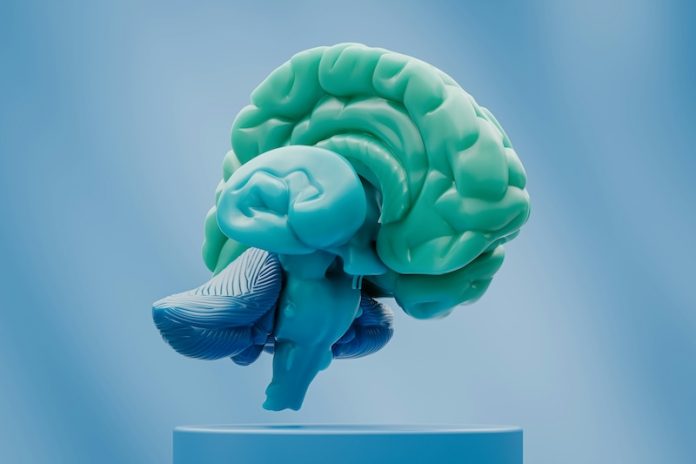
Alzheimer’s disease (AD) is often recognized by its well-known symptoms—memory loss, confusion, and cognitive decline.
But long before these signs appear, people may experience sleep problems, anxiety, and depression.
These early, non-cognitive symptoms can develop decades before noticeable memory changes, suggesting that the disease quietly begins affecting the brain much earlier than we typically detect it.
A new study led by researchers at UC San Francisco’s Memory and Aging Center may help explain why certain brain cells are more vulnerable to Alzheimer’s in these early stages.
The team discovered that differences in how neurons manage cholesterol could be a key factor in why some brain regions are more susceptible to damage than others.
Published on March 26 in Alzheimer’s & Dementia, the study compared two specific brain regions from the same individuals—one region that remains mostly unaffected by Alzheimer’s and another that shows early signs of the disease. By examining these side by side, the scientists hoped to understand what makes some neurons more fragile in the face of AD.
To do this, they used brain tissue from two major sources: the Neurodegenerative Disease Brain Bank at UCSF and the Biobank for Aging Studies at the University of São Paulo.
From each brain, they looked at two regions: the Substantia Nigra (SN), which produces dopamine and tends to resist Alzheimer’s-related damage, and the Locus Coeruleus (LC), which produces noradrenaline and is one of the first regions affected by the disease.
Both regions are chemically and anatomically similar—and are involved in other brain disorders like Parkinson’s disease—but they react very differently to Alzheimer’s. The question was: why?
Using RNA analysis to study gene activity in each region, the researchers found a major difference in how these neurons handle cholesterol.
“The LC neurons seem to be extremely hungry for cholesterol,” explained first author Dr. Alexander Ehrenberg. “They both make it themselves and absorb it from their environment at much higher levels than the SN neurons.” This “super-hungry” behavior could be what puts LC neurons at higher risk.
Why does this matter in Alzheimer’s? The study showed that LC neurons have more of a protein called LDLR (low-density lipoprotein receptor), which helps cells absorb cholesterol.
But this receptor can also allow harmful amyloid-beta oligomers—small toxic clumps of protein tied to Alzheimer’s—to enter the cells. SN neurons, by contrast, produce more of a molecule that breaks down LDLR, offering some protection from these toxic proteins.
The researchers confirmed these findings using immunohistochemistry, a powerful lab technique that allows scientists to see proteins in individual brain cells. They saw clearly that LC neurons had more LDLR than SN neurons, supporting the idea that cholesterol uptake plays a direct role in the neurons’ vulnerability.
“Our findings suggest that cholesterol regulation may explain not just why some people are more vulnerable to Alzheimer’s, but why certain brain regions suffer more damage in the earliest stages of the disease,” said senior author Dr. Lea Grinberg, a professor of neurology and pathology at UCSF.
They also found other important differences between the brain regions—like how they process metals or other stress-related pathways—but cholesterol stood out as a central clue. Because the LC plays a role in regulating sleep, attention, and inflammation—all of which are disturbed early in Alzheimer’s—understanding why these cells break down is crucial.
This study brings valuable insight into one of the longest-standing questions in Alzheimer’s research: Why are some neurons damaged early in the disease, while others seem to stay protected?
By pinpointing cholesterol metabolism as a key difference, the UCSF team may have uncovered a vulnerability that could be targeted in future treatments. If scientists can develop ways to balance cholesterol use in neurons—or block harmful proteins from entering through cholesterol receptors—it could slow or even prevent early damage in the brain.
Importantly, this research focuses on the Locus Coeruleus, a region involved in non-cognitive functions like sleep and mood regulation. These symptoms often appear long before memory loss, so preventing LC damage could offer a way to detect or treat Alzheimer’s in its earliest stages—perhaps even before cognitive symptoms begin.
While more research is needed to confirm these findings in living patients, this study sets the stage for new therapeutic directions. Treatments that target cholesterol regulation in the brain may help preserve vulnerable neurons and delay the progression of Alzheimer’s, offering hope in a field that urgently needs better early-intervention tools.
If you care about brain health, please read studies about vitamin D deficiency linked to Alzheimer’s and vascular dementia, and higher magnesium intake could help benefit brain health.
For more information about brain health, please see recent studies about antioxidants that could help reduce dementia risk, and coconut oil could help improve cognitive function in Alzheimer’s.
The research findings can be found in Alzheimer’s & Dementia.
Copyright © 2025 Knowridge Science Report. All rights reserved.



